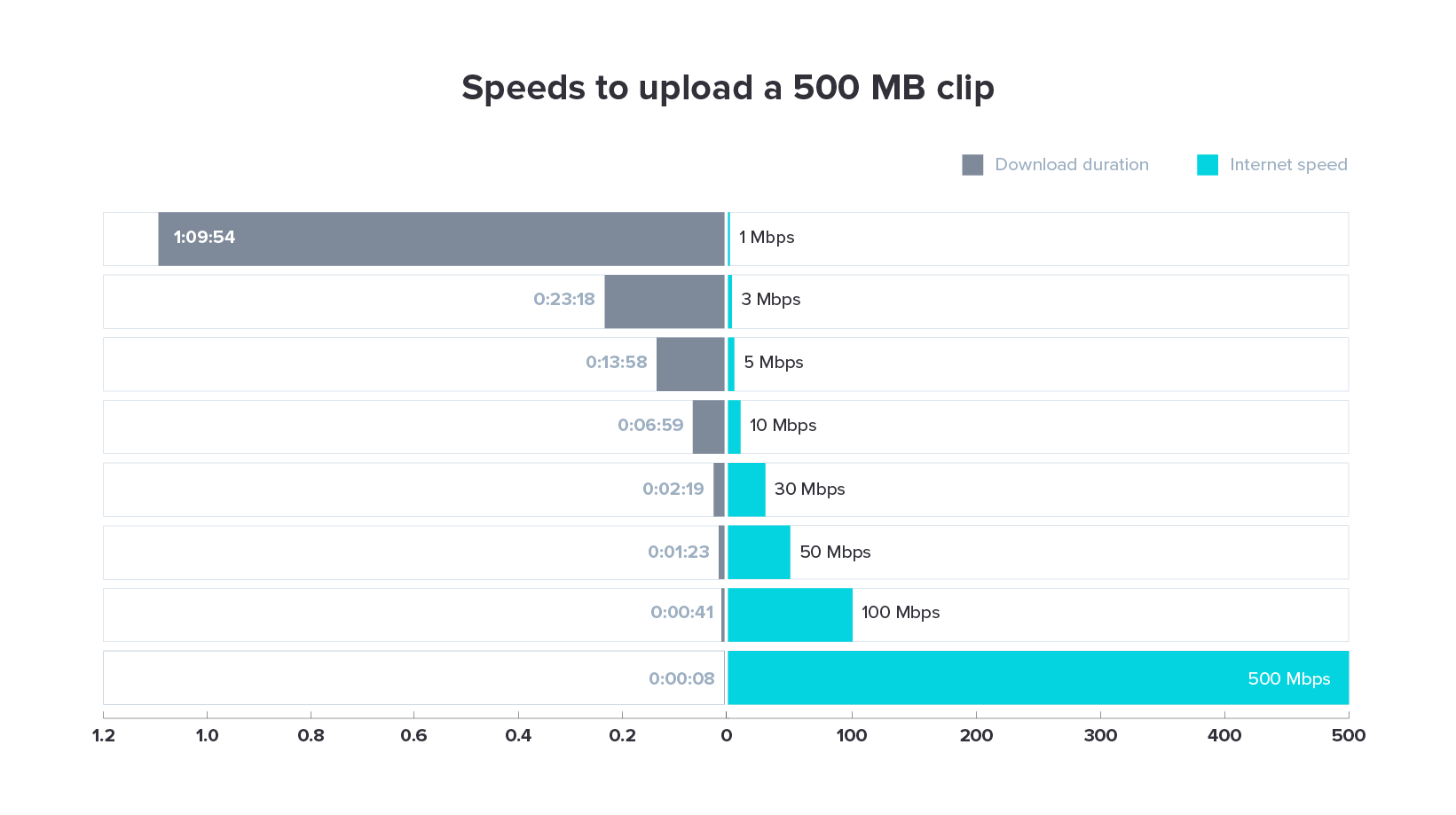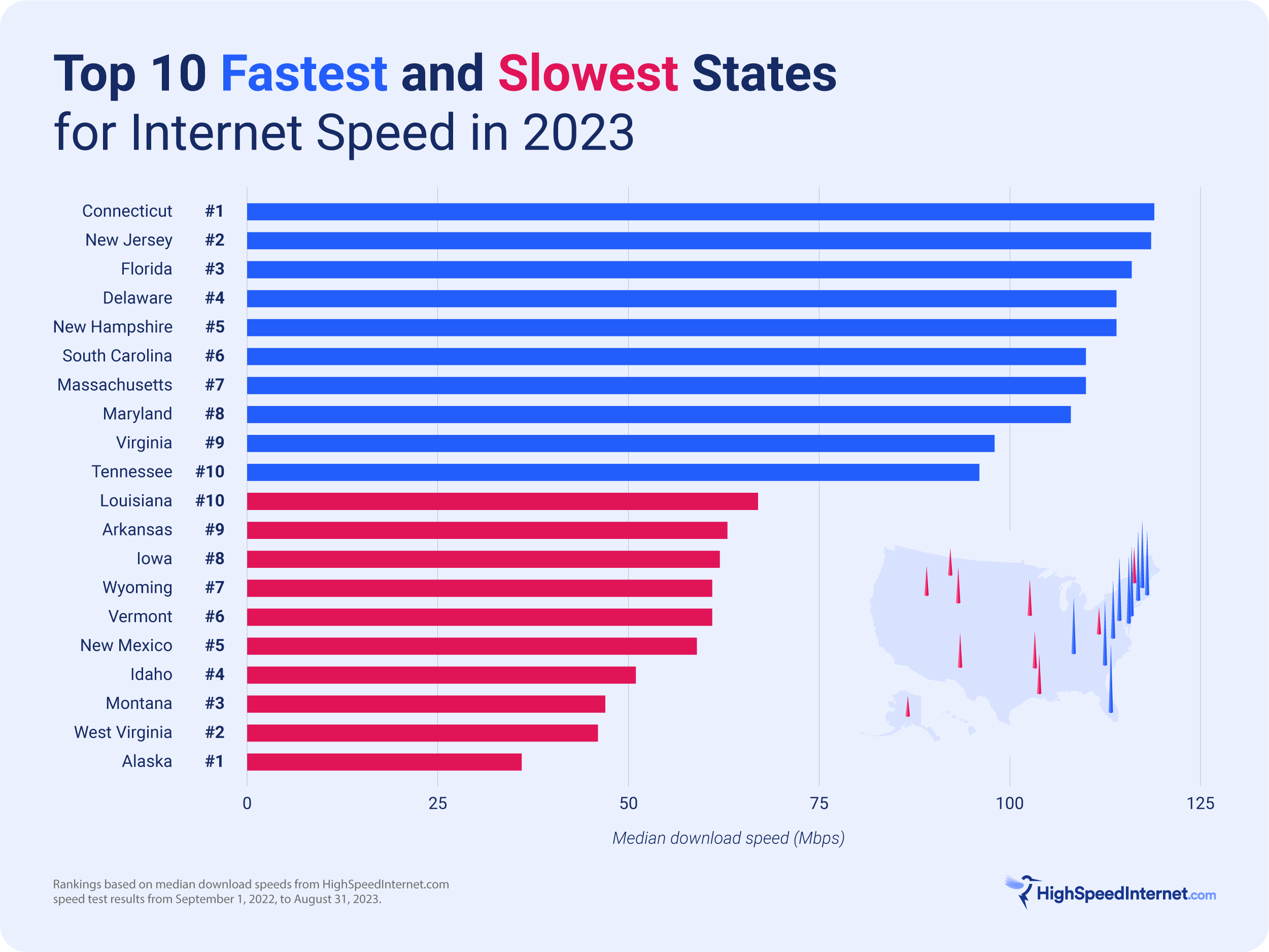Just how to Pick the Right Internet Plan Based Upon Megabits Per Second
Just how to Pick the Right Internet Plan Based Upon Megabits Per Second
Blog Article
Just How Megabits Per Second Effect Your Online Tasks
The principle of megabits per second (Mbps) plays an essential duty fit our on the internet experiences. As digital activities multiply, recognizing the ramifications of Mbps on video clip, gaming, and streaming conferencing comes to be increasingly essential. Higher Mbps can enhance efficiency and lower interruptions, while poor rates may foster stress and inadequacy. Analyzing your household's particular needs in connection with these speeds is crucial, particularly as several devices try bandwidth. Yet, the subtleties of how Mbps impacts numerous online tasks require additional exploration, especially as our dependence on digital connectivity remains to advance.
Understanding Megabits Per Second
When taking into consideration internet speed, it's necessary to comprehend the idea of megabits per second (Mbps), which works as a basic dimension for information transfer rates. This statistics evaluates just how much data can be transmitted over an internet link in one second, giving a clear understanding of efficiency abilities - Megabits Per Second. For context, one megabit is equal to one million bits, and Mbps is frequently used to reveal bandwidth for various on the internet tasks
A higher Mbps indicates a faster internet link, making it possible for customers to carry out tasks such as downloading documents, surfing websites, and involving in online gaming extra efficiently. Typical surfing requires around 1-5 Mbps, while streaming high-definition video clip might require 5-25 Mbps. Understanding these demands is vital for establishing the proper web speed needed for particular tasks.
Additionally, the number of tools connected to a network can impact general performance. Several individuals streaming, video gaming, or downloading and install all at once can strain readily available data transfer, causing slower rates - Megabits Per Second. Assessing personal online practices and requirements is crucial in selecting an internet plan that aligns with one's needs, ensuring a seamless digital experience
Streaming and Buffering Issues
Streaming high-def content has ended up being a staple of modern-day on the internet home entertainment, yet it is typically come with by annoying buffering concerns. These interruptions can significantly interfere with the checking out experience, bring about frustration and prospective loss of target market interaction. Buffering takes place when the data sent from the streaming service is not gotten quickly enough to keep a smooth playback, often because of insufficient web speed gauged in megabits per second (Mbps)

Furthermore, real-time streaming can be affected by network blockage, which takes place when several tools share the very same transmission capacity. Subsequently, maximizing connection rate and making certain adequate Mbps is crucial for a seamless streaming experience. As streaming services continue to develop, understanding the impact of Mbps on buffering issues continues to be critical for customers looking for continuous home entertainment.
Online Video Gaming Efficiency
The influence of internet speed on on-line tasks expands past streaming, substantially affecting on-line pc gaming efficiency. In affordable video gaming, reduced latency and high data transfer are vital for a seamless experience. A rapid connection reduces lag, allowing gamers to respond quickly to in-game events, which can be the difference between victory and defeat.
Transmission capacity, gauged in megabits per second (Mbps), plays an important role in sustaining numerous devices and video gaming platforms at the same time. Not enough bandwidth can bring about went down links or lowered video game quality, adversely impacting gameplay. For circumstances, online multiplayer games need considerable information transfer, specifically during peak gaming hours when many gamers are online.
Busy first-person shooters require higher rates to maintain responsiveness, while turn-based strategy video games might operate fairly well on lower speeds. As on the internet video gaming proceeds to evolve, with raising visual fidelity and more complicated multiplayer environments, the demand for higher Mbps will only escalate.
Video Conferencing Quality
In today's electronic landscape, video conferencing top quality is heavily influenced by net rate, particularly in regards to bandwidth and latency. Premium video calls need adequate bandwidth to transfer sound and video clip information effortlessly. Usually, a minimum of 1.5 click now Mbps upload and download rates is suggested for conventional definition video clip, while high-definition video clip conferencing typically requires a minimum of 3 Mbps.
Latency, or the delay in between sending out and getting data, additionally plays a vital duty in the customer experience. Higher latency can lead to resemble, lag, and disjointed interactions, which can hinder collaboration and involvement during meetings.
Additionally, multiple participants in a video conference can strain offered bandwidth, demanding even greater speeds. Network blockage, usually triggered by synchronised activities like streaming or downloading, can further weaken video clip high quality. Thus, for companies counting on video conferencing for remote cooperation, comprehending the partnership between megabits per total and second interaction quality is crucial for maintaining performance and enhancing digital interactions.
Choosing the Right Web Plan
Picking a suitable net plan is vital for making certain optimal efficiency in numerous on-line tasks, specifically in settings that demand high transmission capacity, such as video conferencing and online video gaming. Megabits Per Second. When considering an internet plan, it is necessary to review both the rate and data allowance to match your specific usage demands
For homes with several users involving in synchronised activities, a plan offering greater megabits per second (Mbps) is recommended. Usually, a minimum of 25 Mbps is appropriate for standard streaming and browsing, while plans surpassing 100 Mbps are more suitable for more extensive jobs. In addition, think about the nature of your online tasks; video conferencing calls for a minimum of 1.5 Mbps submit speed, while on the internet gaming may need a reduced latency yet consistent connection.
It is browse this site likewise important to examine your information cap. Unrestricted information strategies can avoid strangling and disruptions, particularly if heavy use is anticipated. Lastly, research provider in your location, as accessibility and prices can vary. By attentively choosing a web strategy customized to your needs, you can boost your on-line experience, making sure smooth, continuous accessibility to your favored tasks.
Final Thought
In conclusion, the relevance of megabits per second (Mbps) in forming online look what i found tasks can not be overemphasized. A thorough understanding of private or family Mbps demands is crucial for picking a suitable internet plan that sufficiently supports varied online activities and user demands.

Normally, a minimum of 25 Mbps is suitable for typical streaming and surfing, while plans exceeding 100 Mbps are better for even more extensive tasks. Furthermore, take into consideration the nature of your online tasks; video clip conferencing requires at the very least 1.5 Mbps publish speed, while online video gaming might require a lower latency but regular connection.
Report this page